Kimchi kognamul guk (김치 콩나물국) is a common every day soup in Korean homes. It’s a variation of kongnamul guk which is made with kongnamul (soybean sprouts), a staple Korean vegetable.
The addition of kimchi takes the soup to another level with a spicy kick that’s good enough to clear your sinuses. When my kids were growing up, I made this soup for them when they had a cold, just like my mother did when I was growing up. It’s my daughter’s favorite soup when she feels under the weather. Nothing beats it on cold days!
Serve it separately, or over the rice to make gukbap (국밥), a soup with rice in it.
Soup base
As with kongnamul guk, this soup is best with an anchovy broth base. You can use beef broth instead, if you want. To make beef broth, simply sauté thinly sliced, bite sized beef until all the pieces turn brown. Pour in 8 cups of water and bring it to a boil. Reduce the heat to medium high and continue to boil, covered, for 10 minutes. See my muguk recipe for reference.
Kimchi
This soup will taste best with old sour kimchi. The juice from the kimchi adds so much flavor to the broth, so don’t skip it if available.
Kongnamul (soybean sprouts)
Kongnamul is high in B vitamins, vitamin C and protein, which is why Kongnamul guk is a popular home remedy for common colds and hangovers in Korea.
Depending on the condition of your kongnamul, you can snip off the roots for cleaner appearance, but it’s necessary. The roots have nutrients too. I usually trim off the bad looking/brownish ones.
Do not overcook soybean sprouts to retain their crunchy texture. In general, you can cook them either covered or uncovered. If cooking covered, do not open the lid while they are being cooked, or the raw bean smell will linger even after cooked.
Seasoning
The kimchi and its juice adds saltiness, so you just need a little bit of additional seasoning, depending on the saltiness of your kimchi. I used a little bit of soup soy sauce (guk ganjang, 국간장) to season the soup in this recipe. If you don’t have Korean soup soy sauce, you can use fish sauce or simply season with salt. I sometimes use saeujeot (새우젖, salted and fermented shrimp) to season this soup. It works really well with this type of soup.
We like it extra spicy with gochugaru. You can always omit it or adjust to your preference.
More Korean soup recipes
For more Korean cooking inspirations, follow along on YouTube, Pinterest, Twitter, Facebook, and Instagram.

Ingredients
- 6 cups anchovy stock See the recipe (I or II).
- 10 ounces soybean sprouts (kongnamul)
- 8 ounces fully fermented kimchi
- 1/4 cup juice from kimchi, if available
- 1 teaspoon gochugaru (red chili pepper flakes) - use less or more to taste
- 2 teaspoons soup soy sauce (guk ganjang) or 1 teaspoon saeujeot - salted shrimp
- 1 teaspoon minced garlic
- 1 scallion roughly chopped
- salt and pepper to taste
Instructions
- Make anchovy broth with 8 cups of water. See the recipe.
- Rinse the soybean sprouts a couple of times, discarding any skins that are floating. Slice the kimchi into about 1/2-inch thick strips.
- Add the sliced kimchi, kimchi juice, gochugaru, and the soup soy sauce (or saeujeot, salted shrimp) to the anchovy broth. Bring it to a boil. Cook over medium high heat until the kimchi turns translucent, about 5 minutes.
- Add the bean sprouts and garlic. Cook, covered, for 3 - 4 minutes. Do not open the lid while the bean sprouts are being cooked, or the raw bean smell will linger even after cooked. Once the bean sprouts are cooked, adjust the seasoning, if needed, by adding salt and pepper.
- Add the scallions and boil for another minute. Serve separately with a bowl of rice, or serve it over the rice in a bowl.
Notes
This recipe was originally posted in January 2013. I’ve updated it here with new photos, more information and minor changes to the recipe.


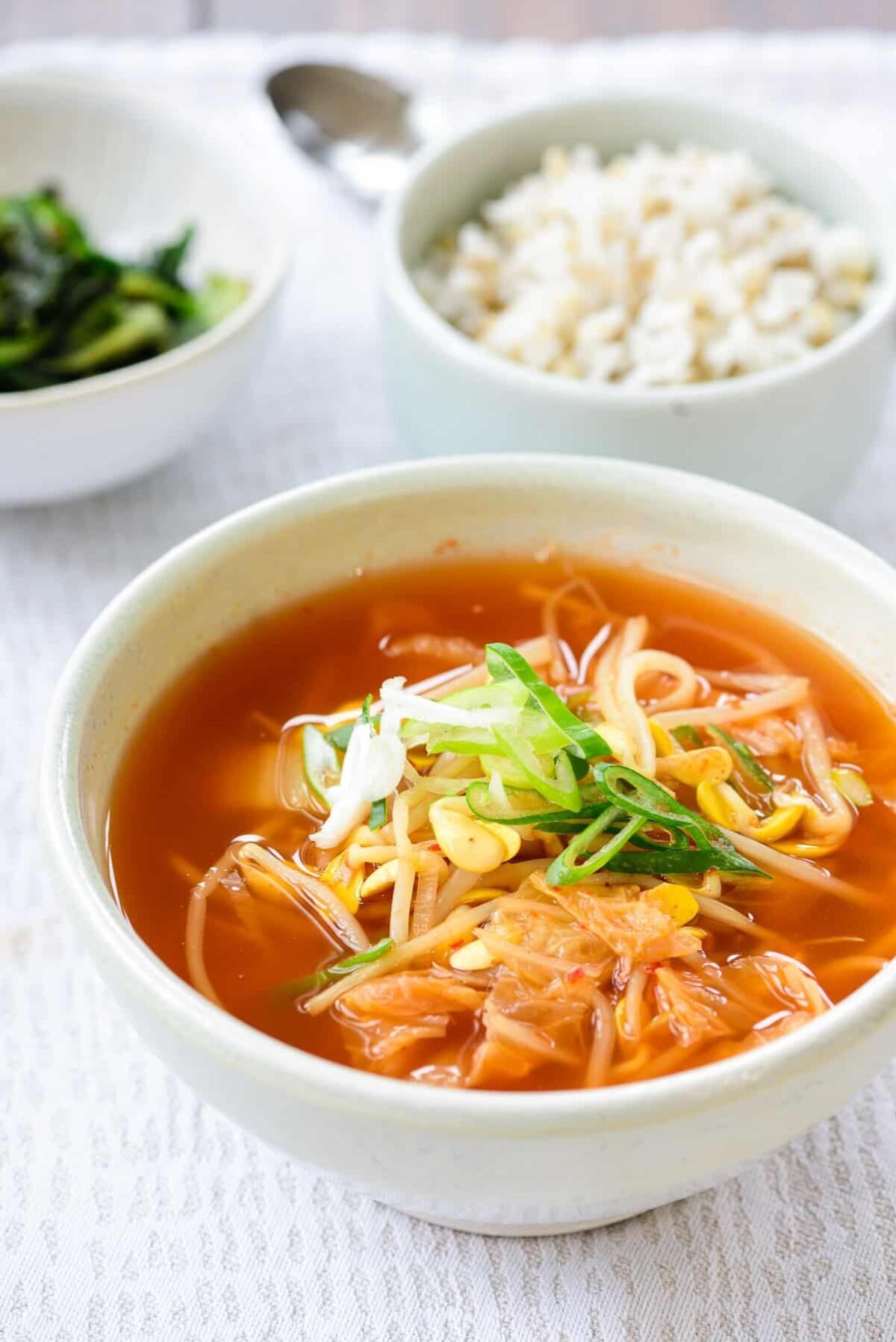
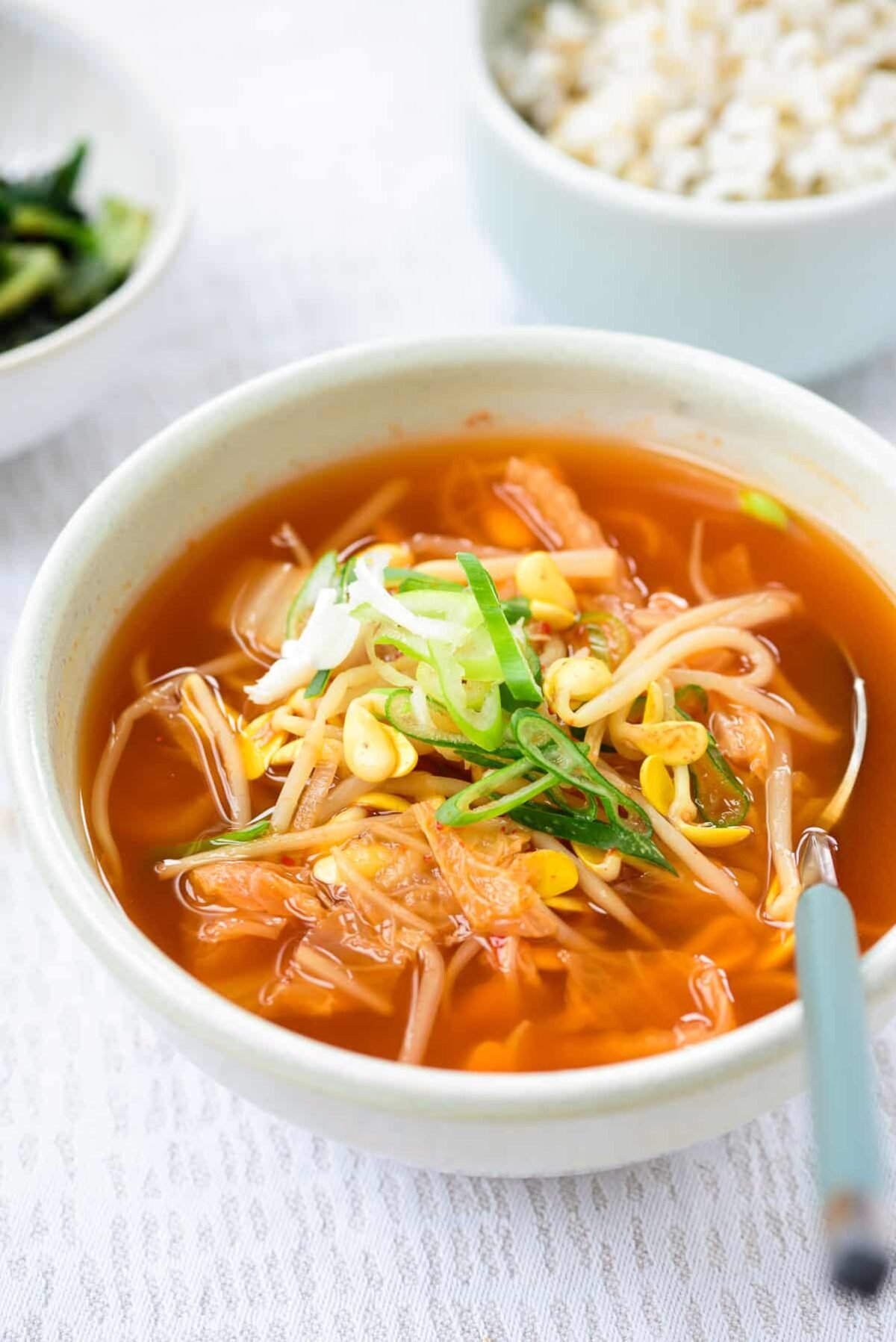
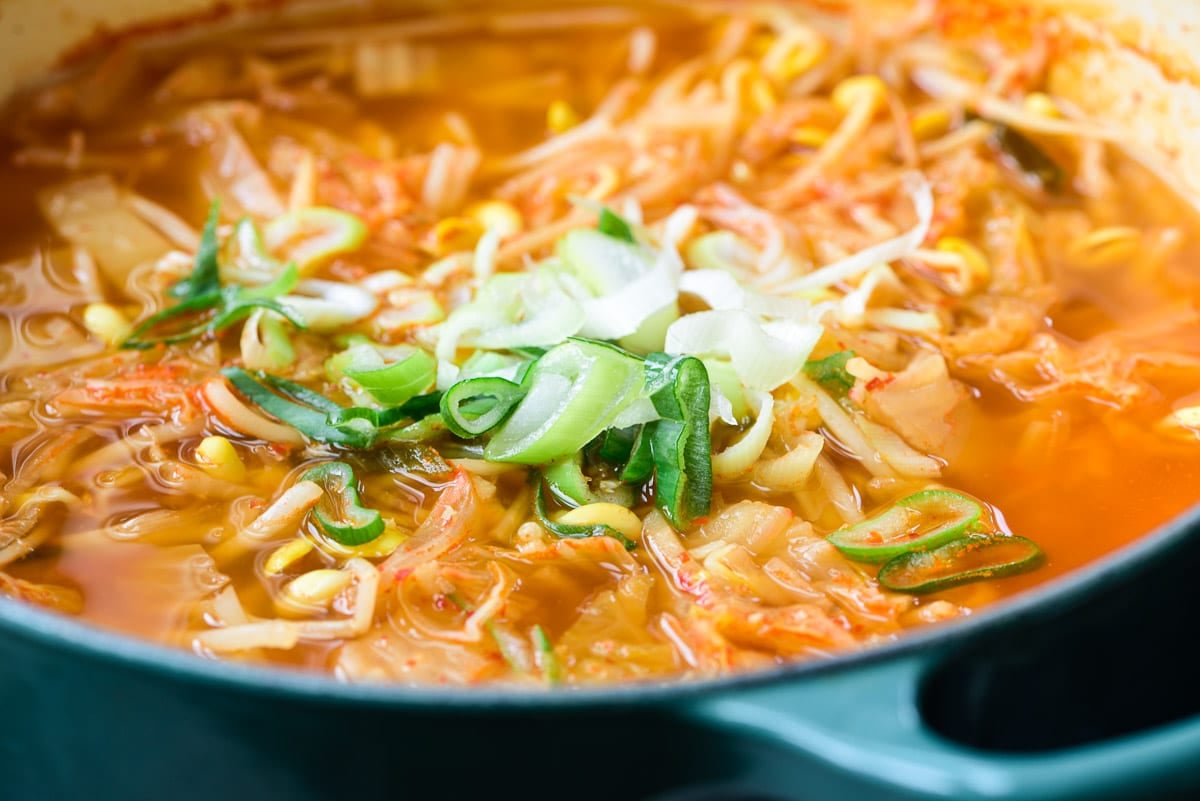
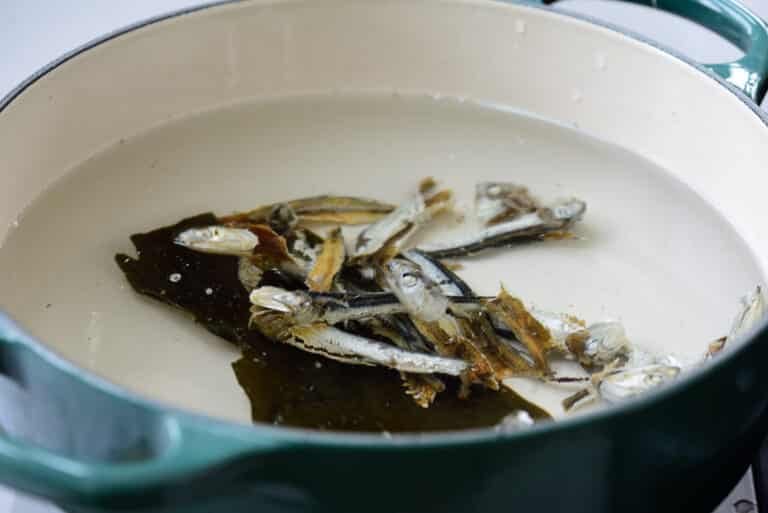
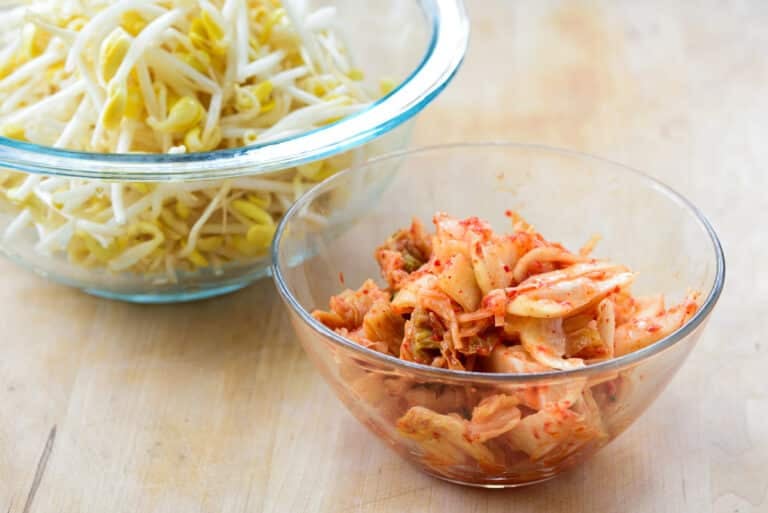
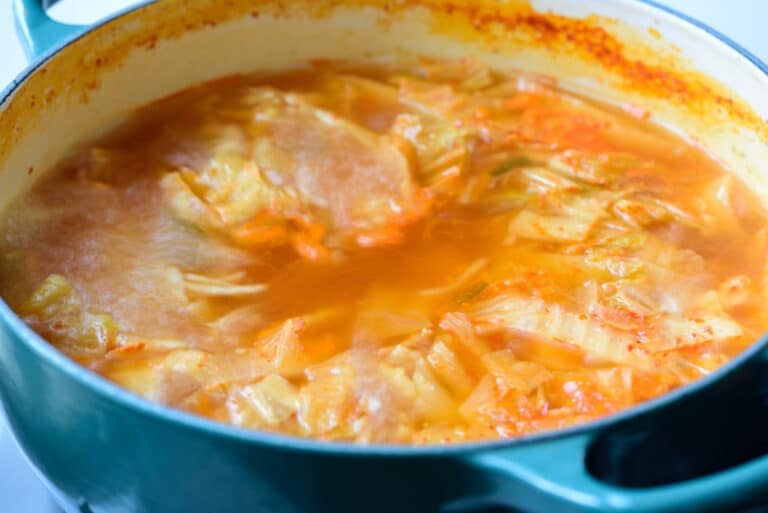

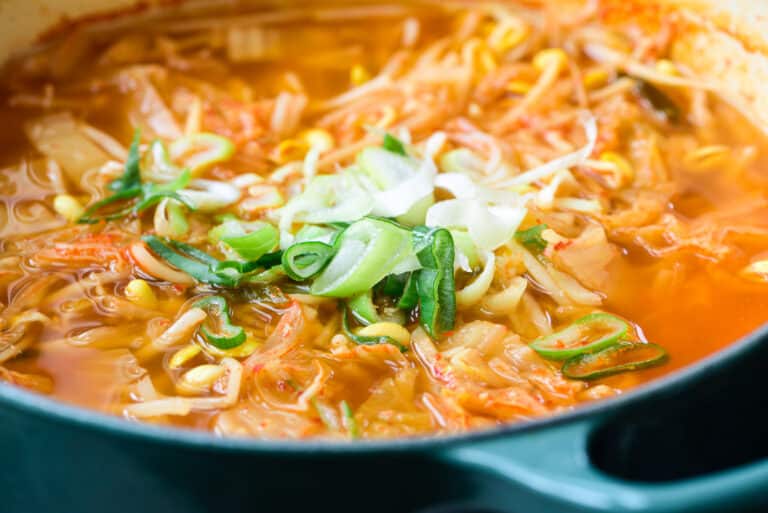
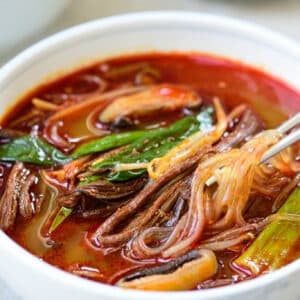


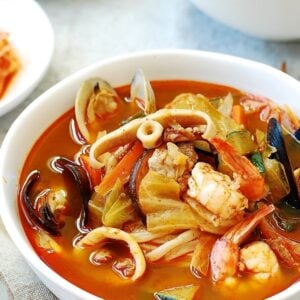













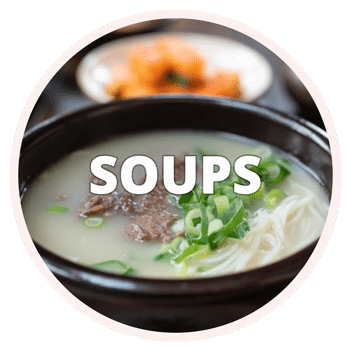



Teresa Hahm says
Thank you so much for posting this! Such a great recipe! The anchovy broth is a must. Tastes like my mom’s! She also uses 새우젓, but honestly I can’t really tell that it’s absent.
Peter says
Thanks Hyosun, I loved it.
Substituted Shimaya Dashi no Moto for the anchovy stock (because I didn’t have it, but I thought it would work) and adjusted the spice to my taste and result… really tasty ! The balance was perfect. Great recipe.
Looking forward to trying more of your recipes 🙂
Michael says
Thank you for this recipe. I followed it faithfully, including the advanced level anchovy broth, and the result was magnificent! The flavors blended wonderfully, and while spicy, the broth was light and bright! The kimchee and bean sprouts were tender, but still had some crunch. I can see why its know for soothing colds and hangovers! After 3 bowls I had to stop myself. Thank you again and love how you relate your dishes to life.
Tammy Chriss says
Can I save the leftovers?? If so, how long?? My mother used to make this all the time!!! Thank you for the recipe!!
Alejandro Avila R says
thank you for making a delicious food
Patrick Bureau says
I wanted to let you know; I cooked did this for my wife today, she has been suffering of congested sinuses last two days and within the hour her sinuses drained… It is a delicious easy to make meal, so much so , my coughing COPD mother in law passed by as I made it, and she tried it, she loves to try new foods, and we discovered for two hours after eating Kimchi Kongnamul Guk, she stopped coughing completely. So she took the extra portions I had home with her and asked me to gather ingredients and to teach her how to make it, for at her home as well. thank you .
Hyosun says
Oh wow that’s so great to hear! Thanks for letting me know.
MW says
Just so you know, the link in “Make anchovy stock with 8 cups of water. See the recipe.” is broken.
THANKS!
Hyosun says
Thanks for letting me know! It’s now fixed.
soybean says
HI. can ready-made soybean sprout soup be bought online?
Hyosun says
I haven’t seen it, but it’s very easy to make if you can find soybean sprouts in your area.
Anonymous says
Is it okay to use sour bean sprouts or should they only be fresh?
Hyosun Ro says
Use fresh soybean sprouts. Enjoy!
Anonymous says
Hi~
Just wondering if there’s a possible substitute for the anchovy stock? Or will the taste be different if it is substituted?
Hyosun Ro says
Just use water. It’ll still be good. Enjoy!
Anonymous says
Would water need to be boiled as well or do you add the kimchi, kimchi juice, gochugaru, and the soup soy sauce and then boil everything together?
Hyosun Ro says
No, you don’t need to pre-boil water.
Cassidy says
I love this recipe! I’ve made this about five times now and I keep coming back for more. Super comforting and I always have most of the ingredients on hand already.
Sue says
Wow congratulations on getting published in the Korean Herald! Love your blog! Can’t wait to try this recipe.
Sandra Mihic says
I love this soup!!! I need to make it again while I still have some kimchi left.
I hope your daughter is better by now, and congrats on the Big feature!
Steven says
This looks great! What do you use in your multigrain rice in the photo? I know you are using some black rice, but what else / ratios do you use?
Hyosun Ro says
I usually use 7 – 9 grain mix, presoaked. But, didn’t have any that was presoaked when I took this photo. So, just used regular short grain rice (2), brown rice (1), and black rice (1/4). Thanks for coming by!
Brian says
I’m interested in trying grain mixes, but the bags I see at the Korean markets don’t have any soaking/cooking instructions in English. What method do you use?
Hyosun Ro says
I just soak for them 3 – 4 hours, until the beans are soft. I usually soak a lot at a time and freeze them, so I can use it anytime I want. Hope this helps
Anonymous says
I love this soup! So refreshing and one of my favorites. I was wondering if you had any ideas on what I can cook or bake for my Korean mother-in-law. I usually bake her cakes, breads, muffins, etc. as well as home made mandoo/potstickers, but I would love some new ideas. Thanks!
Hyosun Ro says
My in-laws love my galbijjim (braised beef short ribs). Also, how about Korean sweets like sesame crunch or hotteok? Haemul Pajeon (seafood scallion pancakes)? Hobak Juk (pumpkin porridge)? See my recipe index for more options and let me know if you have any questions. Cheers!
Julie P. says
New follower!!! I love reading amazing recipes for Korean food. Your blog is fantastic. Congrats on your publication, that’s incredible. 🙂
Hyosun Ro says
Thank you, Julie! And welcome to Korean Bapsang!
Sissi says
The soup looks perfect for tonight’s dinner. We both eat very hot food so my husband would love it too. Why haven’t I bough soybean sprouts? (I do have kimchi though…) I think I will prepare it some time soon because it looks simple, healthy, light but warming and nourishing. Perfect after holiday’s overeating.
Congratulations for the publication and future publications too! You will soon be a huge star in Korea.
Nami | Just One Cookbook says
Just vegetable but it looks like a wonderful savory soup! My kids and I cannot eat spicy but I know my husband would eat like 3 bowls! 😀
Jenn says
It’s warming me up just looking at your awesome photos!
TheNoshingBride.com
Anonymous says
This looks delicious! I have a bunch of kimchi that I don’t know what to do with. This is perfect, thanks!
Frugal Flo says
Awwwww I wish this was posted a few days ago when i was still sick hehe. Maybe I could’ve gotten better sooner! hehe. Thanks again for the lovely antidotes and recipe and congratulations again on being a contributer for the Korean Herald!